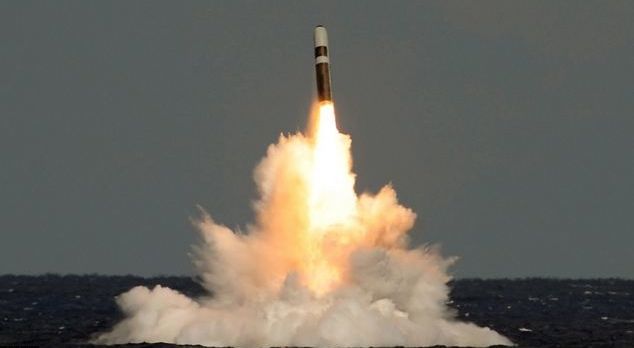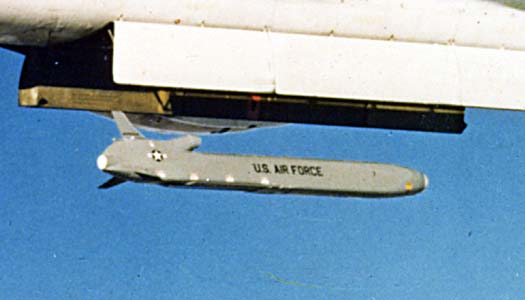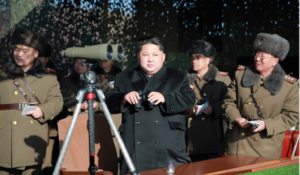No ‘Automaticity,’ But Yes To Low Yield Nukes: NPR
Posted on

Test of a Navy Trident D5 submarine-launched ballistic missile.
PENTAGON: The United States government sees a fundamentally more threatening world today, one that requires a more nuanced balance of delivery systems than we’ve deployed since the end of the Cold War.
That’s really the change that has driven the results of the Trump Administration’s Nuclear Posture Review, officially released today.

Anita Friedt
Careful transparency continues to underpin the US crafting of nuclear policy. In fact, the State Department briefed the Russians and Chinese on the NPR today, according to Acting Assistant Secretary of State Anita Friedt, who briefed the press here this afternoon. Actually, she told a somewhat skeptical press corps, “we talked to the Russians a lot.”
Perhaps the most intriguing tidbit we got from this afternoon’s official unveiling of the NPR was the persistent use of the term “automaticity” by John Rood, undersecretary of Defense for policy.
“There is no automaticity to this policy,” Rood replied when asked how the US would manage its response to “extreme circumstances,” the undefined occurrences that the NPR says could drive the United States to use nuclear weapons. (In other words, there isn’t a specific set of circumstances that will automatically trigger a nuclear response).

John Rood
The NPR states: “the United States would only consider the use of nuclear weapons in extreme circumstances to defend the vital interests of the United States, its allies and partners.”
To better manage the ongoing modernization of the Russian and Chinese nuclear arsenals, as well as the proliferation of nuclear weapons to North Korea and other states, the US, Rood said, needs a more flexible set of deterrents. The development of a low-yield submarine-launched nuclear cruise missile would help.
“I view this as a prudent reaction to Russian ‘escalate to de-escalate’ doctrine,” said Bob Work, formerly deputy defense secretary under both Obama and Trump, in an email. “If the Russians employ a small yield nuke for coercive action, and the only responses we can provide the President are large-yield options, that is not a good place to be. We want to be able to respond proportionately, to signal our resolve without undue escalation.”
“Also, as I understand it, these will be delivered by SLBM (Submarine-Launched Ballistic Missiles), which have a higher probability of penetration than other means,” Work said. Submarine-launched weapons give the adversary less warning time than aircraft or IBCMs launched from the U.S., which makes them more worrying as potential first-strike weapons but also means missile defenses have less time and space to shoot them down.

Air-Launched Cruise Missile (ALCM)
There’s another view of the move for the US to again deploy low-yield nuclear weapons.
“One of the most disturbing and significant changes to U.S. policy outlined in the NPR is the tighter integration of U.S. nuclear and conventional forces, including training and exercising with these integrated forces, so U.S. forces can operate—as the NPR states—in the face of nuclear threats and employment. This is the text-book definition of nuclear war-fighting. This new policy deliberately blurs the line between nuclear and conventional forces and eliminates a clear firewall,” Lisbeth Gronlund, senior scientist of the Global Security Program at the Union of Concerned Scientists, writes in a statement. “The decision to deploy another type of low-yield weapon—this one on submarines—is consistent with the new emphasis on nuclear war-fighting. Existing U.S. B61 bombs and air-launched cruise missiles already have low-yield options.”
Among the reasons for the US focus on Russia’s nuclear weapons and doctrine is the NPR’s public confirmation that Russia has begun development of a “new intercontinental, nuclear armed, nuclear-powered, undersea autonomous torpedo.” A huge long-range torpedo known in English as the Status-6, it appears to be designed to strike US ports, bases and cities.
The US government has not undertaken such a deep and detailed look at the types and uses of nuclear weapons at the highest levels in many years. Given that heightened attention to nuclear doctrine, nuclear threats, US weapons and delivery systems, are our senior leaders personally taking part in nuclear war-games and related exercises, I asked undersecretary Rood.

Kim Jong Un
“I have personally participated in the type of planning of exercises. That’s not unusual, by the way,” Rood said. “I think the security environment in the world has elevated the level of attention to this area whether it’s in the Defense Department, the Energy Department, or the State Department.” After all North Korea’s leader helps on a regular basis. “How can you not be, when Kim Jong-un brings it to the front of your radar screen in the morning many times, based on what he’s saying or doing?”
That personal attention and participation in nuclear matters by senior leaders a great deal, Tom Mahnken, president of the Center for Strategic & Budgetary Assessments (CSBA), told us.
“After decades of nuclear weapons being consigned to the margins of national security, it is important for senior political and military leaders to re-acquaint themselves with nuclear capabilities, both ours and those of competitors,” Mahnken said. “Previous generations of national security leaders had an intimate understanding of our capabilities and those of our adversaries. Having lived through World War II and the Cold War, when we actually tested our nuclear stockpile, they had a deep respect for nuclear weapons. To today’s leaders, both in the U.S. and abroad, nuclear capabilities are largely abstract. Whereas past leaders, from the President on down, participated in war-games that explored nuclear use scenarios, such activity today occurs rarely, if at all. That is worrisome given them more competitive strategic environment that we are in.”
2018 Nuclear Posture Review – Final Report on Scribd
Subscribe to our newsletter
Promotions, new products and sales. Directly to your inbox.
